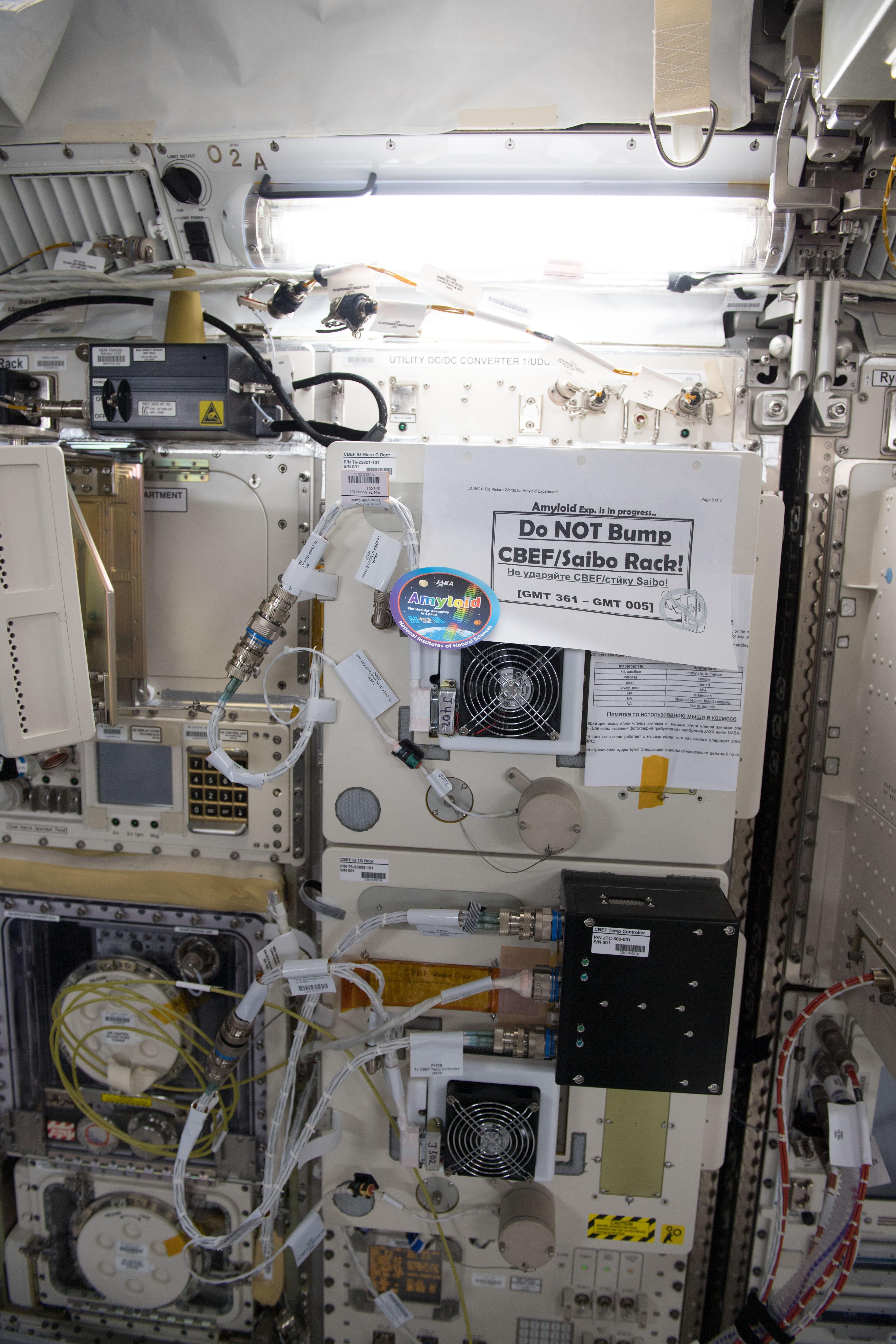- completed
[Amyloid]
Characterization of amyloid formation under microgravity environment: Toward understanding the mechanisms of neurodegenerative diseases
- Biology and Biotechnology
ISS Science for Everyone
SCIENCE OBJECTIVES FOR EVERYONE
Amyloid fibrils are protein aggregations associated with Alzheimer’s disease and diabetes. Developing new treatments requires understanding the mechanisms behind amyloid fibril formation. Recent evidence suggests similarities between amyloid formation and protein crystallization, widely studied in space. Characterization of Amyloid Formation Under Microgravity Environment: Toward Understanding the Mechanisms of Neurodegenerative Diseases (Amyloid) prepares high-quality, homogeneous amyloid fibrils in microgravity and examines the samples back on Earth, using nuclear magnetic resonance (NMR) and electron microscopic analyses, to characterize the fibrilization process.
Experiment Description
RESEARCH OVERVIEW
- For promoting clinical approaches to the amyloid disease treatments, it is important to better understand the underlying mechanisms of amyloid fibril formation.
- In the Characterization of Amyloid Formation Under Microgravity Environment: Toward Understanding the Mechanisms of Neurodegenerative Diseases (Amyloid) investigation, the goal is to learn fundamental insight into the molecular mechanism of amyloid fibril formation in the pathogenesis of neurodegenerative diseases.
- So far, it has been difficult to optimize treatments for Alzheimer's disease. New pharmaceutical developments to recover or prevent the disease by inhibiting the amyloid fibril formation, could represent a significant step to treating those with Alzheimer’s or other neurodegenerative diseases.
DESCRIPTION
Amyloid fibrils are self-assembled ordered supermolecules comprising of proteins and known to be associated with various diseases, including Alzheimer’s diseases and diabetes. Although each of these diseases is characterized by its specific amyloidogenic proteins, it has been speculated that there exist common molecular mechanisms that govern amyloid formation across diverse systems. Hence, it is important to make clear the underlying mechanisms of amyloid formation for promoting clinical approaches to amyloid diseases.
Recent evidence has suggested similarity between amyloid formation and protein crystallization. However, little is known about the detailed mechanisms of amyloid formation. Under these circumstances, a goal of the Characterization of Amyloid Formation Under Microgravity Environment: Toward Understanding the Mechanisms of Neurodegenerative Diseases (Amyloid) investigation attempts to characterize the amyloids formed in the microgravity environment. It is planned to bring back homogeneous amyloid fibrils from the International Space Station in order to characterize the fibrilization process and the intermediate structure of amyloid β fibrils by thioflavin T-fluorescence assay, Nuclear Magnetic Resonance (NMR), and electron microscopic analysis. This novel approach provides not only fundamental insights into the molecular mechanisms of amyloid formation in the pathogenesis of neurodegenerative diseases, but also represents a great opportunity for evaluating the onset risk of these diseases caused by microgravity environments. Therefore, it is believed that this proposal is highly innovative and beneficial for society.
Media Gallery


Applications
SPACE APPLICATIONS
Amyloid uses the microgravity environment to provide new insights into the risk of onset of amyloid diseases.
EARTH APPLICATIONS
Fundamental insights into the molecular mechanism of amyloid fibril formation advances development of pharmaceuticals that inhibit amyloid fibril formation to prevent, or treat, Alzheimer’s disease.
Operations
OPERATIONAL REQUIREMENTS AND PROTOCOLS
An International Space Station (ISS) crew member transfers samples from the Minus Eighty Laboratory Freezer for ISS (MELFI) -95°C to MELFI or Polar at +2°C to melt the samples before the sample incubation. The next day, the samples begin incubation in the Cell Biology Experiment Unit (CBEF). After 6 hours, 1, 3, and 9 days (Run 1) or 9 days (Run 2), the samples are removed and inserted into MELFI at -95°C. All samples are stored at -95°C and recovered on Earth at -95°C. Temperature Loggers are also launched to monitor the temperature near samples during incubation. The Temperature Loggers are recovered on Earth at ambient conditions.
Publications
PRINCIPAL INVESTIGATOR(S)
KATO Koichi [National Institutes of Natural Sciences]
Unless specified otherwise, rights to all images belong to ©JAXA



